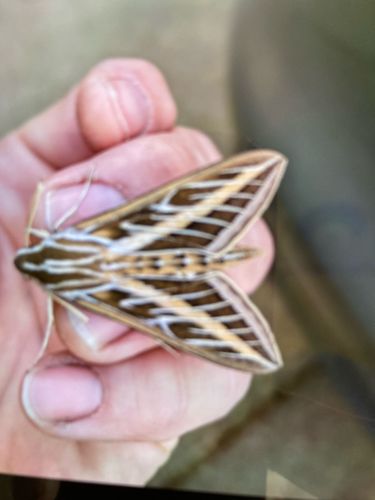White-lined Sphinx Moth
Scientific Name: Hyles lineata
Order & Family: Lepidoptera, Sphingidae
Size: Wingspan typically ranges from 2.5 to 3.5 inches (6 to 9 cm).

Natural Habitat
Highly adaptable, found in a wide variety of habitats including deserts, urban areas, gardens, meadows, and woodlands across North and South America, and parts of Europe and Asia.
Diet & Feeding
Adult moths feed on nectar from a variety of deep-throated flowers, hovering like hummingbirds while they feed. Caterpillars (hornworms) feed on a wide range of plants, including evening primrose, four-o'clocks, grape, tomato, and various weeds.
Behavior Patterns
These moths are strong, fast fliers and are often crepuscular or nocturnal, though they can sometimes be seen feeding during the day. They are migratory and can travel long distances. The caterpillars are often called hornworms due to a horn-like protrusion on their posterior.
Risks & Benefits
Generally beneficial as pollinators for many plants. Their caterpillars, while sometimes numerous enough to cause minor defoliation of host plants (including some crops like tomatoes), rarely cause significant economic damage. They pose no direct risk to humans.
Identified on: 10/27/2025